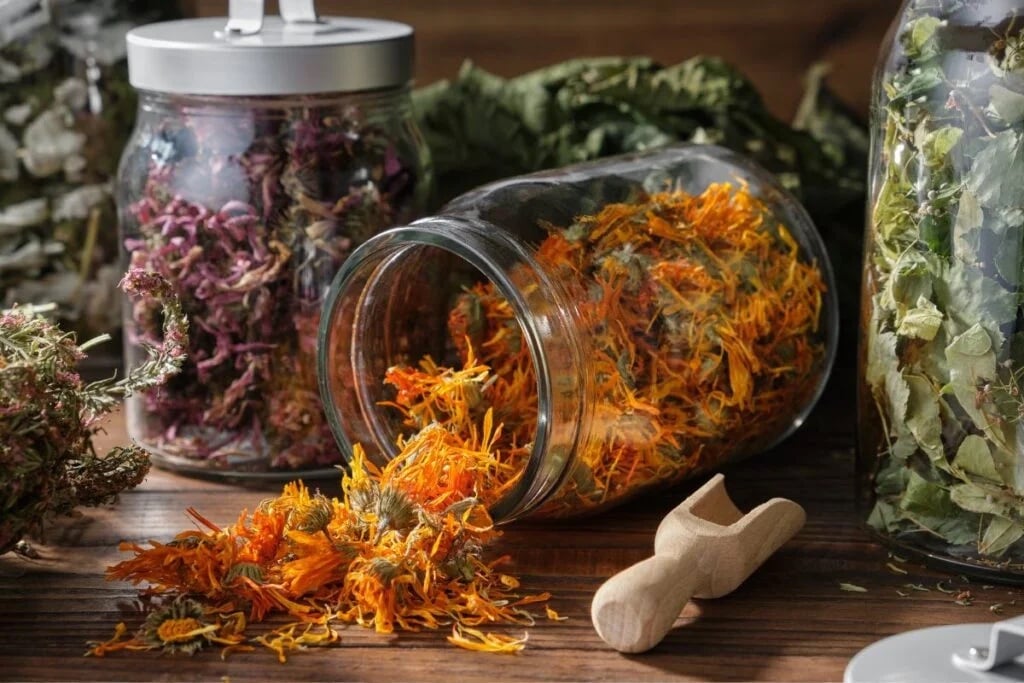There is only one type of tea in the world that is equal in value to Champagne. This is Darjeeling tea. Its name is derived from the location of Darjeeling in West Bengal, India. It is from the tea trees grown in the foothills of the Himalayas in this region that the authentic Darjeeling tea is produced, with a distinctive taste that is unmatched anywhere else. The Himalayan hillside soil, thin air, and heavy rainfall give the leaves a unique floral aroma and a fruity aftertaste, particularly of muscat grapes and exclusive Darjeeling tea benefits.
Darjeeling Tea with Certified Geographical Indication
Darjeeling tea is classified as a black tea but is closer to long because of its shorter oxidation process. The flavor characteristics of Darjeeling tea have flavor notes typical of black and green tea.
Only tea certified by the Tea Board of India can bear the Darjeeling name. This organization officially recognizes about 90 tea gardens as having the right to label their products as Darjeeling tea.
Since 2004, Darjeeling tea has been a protected geographical indication. It became the first Indian product to be granted legal protection for a geographical indication by the World Trade Organization. In 2011, Darjeeling tea was declared a protected geographical indication in the European Union.
Darjeeling tea is prone to counterfeiting, like most exclusive and expensive things. The most common way is to add a small portion of Darjeeling tea to various tea blends and call it by this sonorous name. Therefore, to buy a genuine product, one should pay attention to the composition, the labeling, and, of course, the price. Real Darjeeling tea cannot be cheap. On average, 100 grams of this tea can cost around EUR 20.
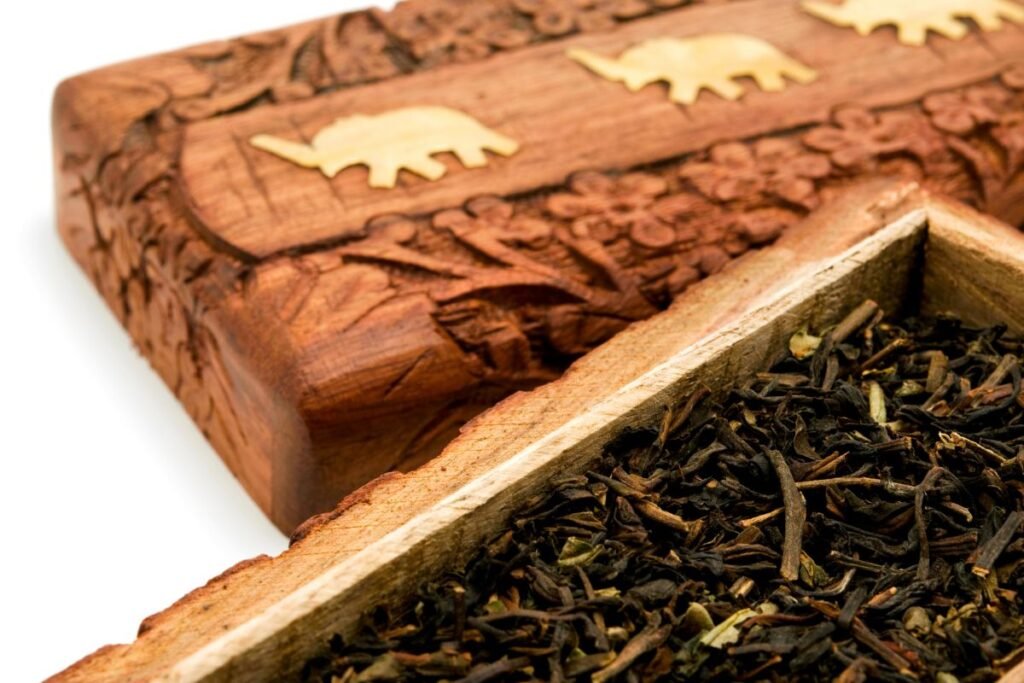
How Is Darjeeling Tea Obtain? What determines its taste?
The tea is harvested four times a year, and each harvest gives the tea a distinct, different taste. The raw tea is hand-picked every 5–10 days. Usually, the top two leaves and the bud are picked, but depending on the product to be produced, sometimes only the bud or both the bud and the top leaf may be picked.
Darjeeling tea is aromatic but loses its aroma when exposed to air for a long time. The tea is particularly sensitive to humidity, direct sunlight, heat, and mild extraneous odors. Given this, you should store Darjeeling tea in an airtight container in a dark place. The tea retains its flavor and aromatic properties for two years after collection.
4 Harvesting of Darjeeling Leaves Periods
The first tea harvest is in the spring, between March and May. These are the first leaves of the tea tree to vegetate after the winter dormancy. The first harvest is the most valuable, and the tea has a pleasant, mild flavor, a floral aroma, and a light color. The leaves also serve to make white tea.
The second harvest takes place in May and June. It is unique because people start to harvest leaves when certain leaf-chewing insects attack them. During this period, the leaves release defensive chemicals, and a natural oxidation process begins in the leaves. This gives the tea its distinctive muscat aroma. The second harvest has also highly valued products, equal to the first.
The third tea harvest is between July and September when the monsoon season begins in the Himalayan foothills. This harvest time is specific due to rapidly growing leaves during warm and humid weather, but they are less aromatic. The third crop has less valuable tea, which is part of the tea blends. Several producers use it to make green or white tea. The third harvest has a lower price, so it is part of the domestic consumption market.
The fourth harvest takes place in October and November when the last tea leaves emerge after the rainy season before the plant goes dormant. Autumn harvest tea is similar in flavor to the second harvest but less pronounced. The tea of this harvest is darker than that of previous harvests.
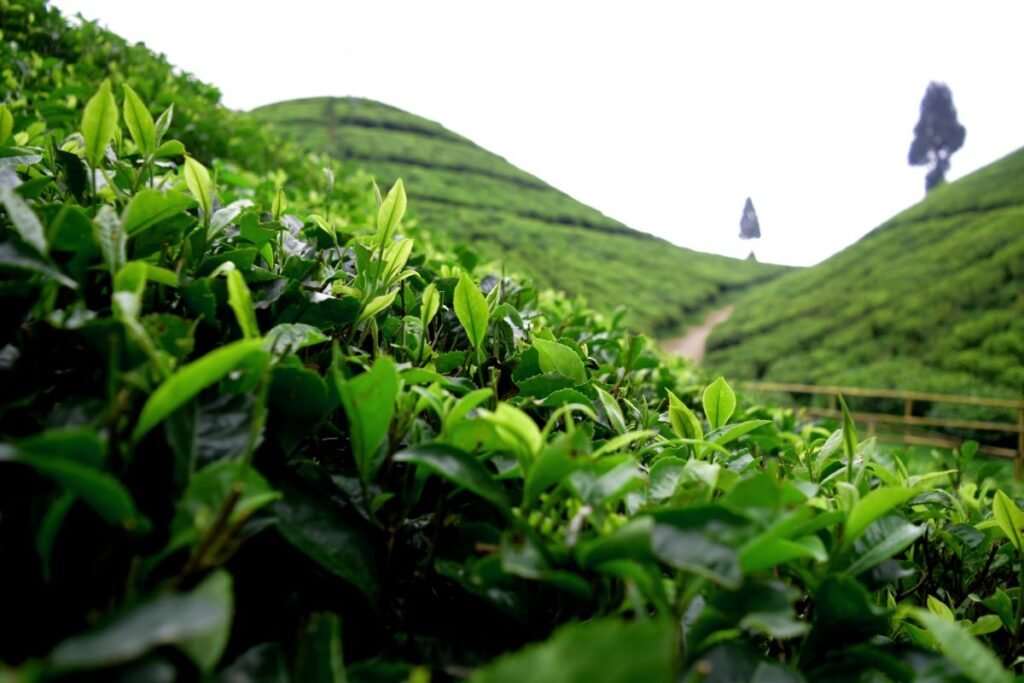
History of Darjeeling Tea
The Chinese tea tree (Camellia sinensis) was first planted in Darjeeling in 1841 by Archibald Campbell, a Briton who worked for an East India Company in the jungle-covered, sparsely populated area to build a hill station in the East Indies for the British in Calcutta. At the time, the British were looking for a new tea source and experimenting with tea plant cultivation in various colonial areas of India. It was in Darjeeling that the cultivation of Chinese tea trees proved successful.
The first commercial garden for this type of tea was launched in Darjeeling in 1856. There were 39 such gardens until 1866. The Makaibari tea garden was the first in the region to have a tea processing factory for drying and oxidizing tea leaves. This technological processing of tea was necessary for the product’s exportation to Great Britain. The tea would take several months to travel, and a way had to be found to bring it back without losing its precious qualities.
After India’s independence in the 1950s, all the tea gardens were sold to Indian companies and managed under Indian law. Many of the tea gardens in the Darjeeling region were certified organic, and the Tea Board of India sought to authenticate the tea and promote this tea heritage internationally. At the beginning of the 21st century, this was achieved. Darjeeling tea is today one of the most valuable teas in the world.
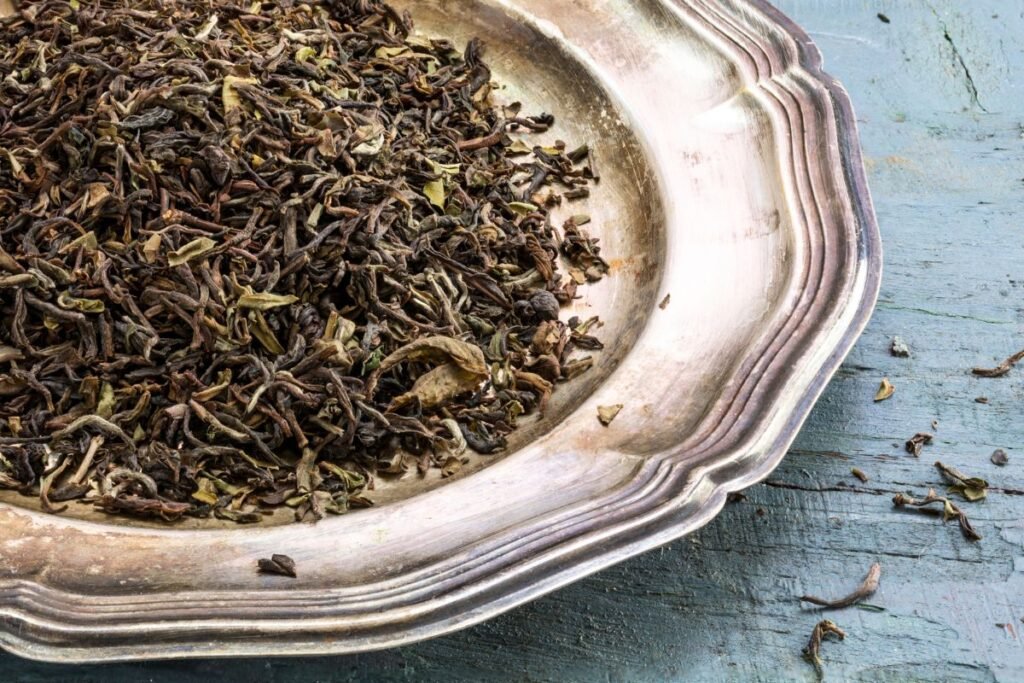
Darjeeling Tea Benefits: Why Should You Enjoy It?
Like any other type of tea made from the leaves of the Chinese tea tree, Darjeeling tea has beneficial properties. The leaves of the tea tree are rich in health-promoting chemicals. These include antioxidants, polyphenols, and phytochemicals (flavonoids). These compounds activate processes in the body that balance metabolism, boost immunity, and fight free radicals. Enjoying quality tea has a positive effect not only on emotional well-being but also on physical well-being.
- Darjeeling tea is a low-calorie drink that balances the metabolism. As a result, it can be used in the diet as a substitute for more calorific beverages.
- Darjeeling tea has antibacterial and antimicrobial effects. Scientists are investigating how these properties could improve oral health and treat bacterial infections in the digestive tract.
- Darjeeling tea may have anti-cancer properties. One in vitro study revealed the anti-cancer effect of Darjeeling tea.
- Darjeeling tea may have a calming effect. One study found that the aroma of Darjeeling tea improved the emotional state during stressful situations.
- Darjeeling tea may help protect the nervous system and brain health.
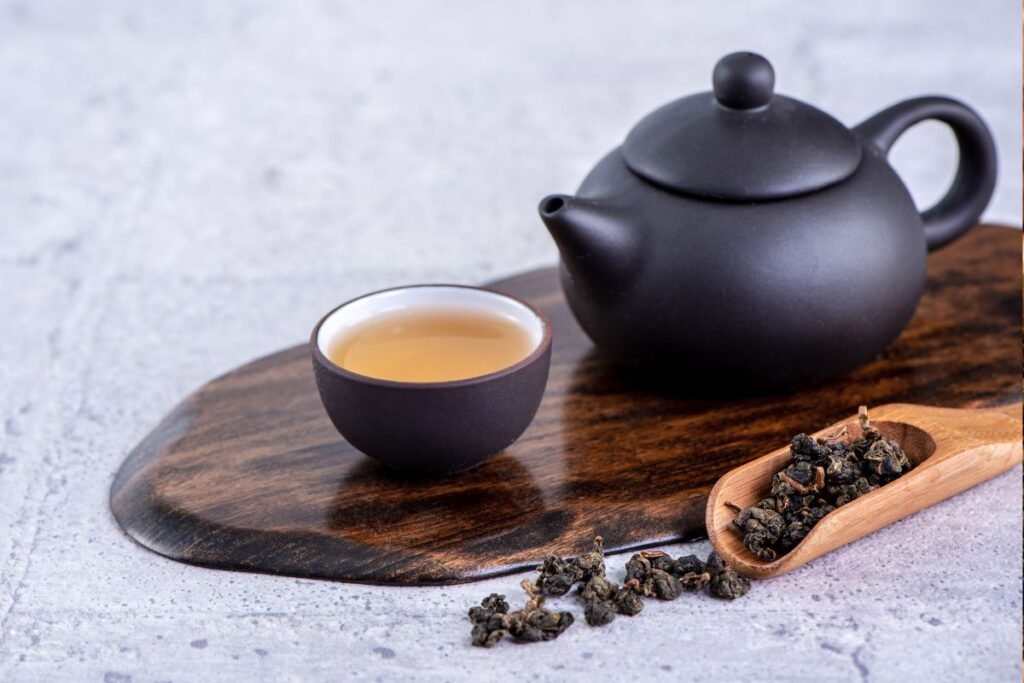
Preparation and Consumption of Darjeeling Tea
The taste of Darjeeling is described as having a floral aroma with woody notes and a fruity (grape, plum, apricot, peach, pineapple, or citrus) taste. It also has a milder, less intense flavor than other teas. The color of Darjeeling tea is usually golden yellow, amber, orange, or brown. It also contains caffeine, about 50 milligrams per cup, which is higher than green tea but lower than black tea.
Making a cup of this tea is easy. You will need:
- 1 teaspoon of Darjeeling tea,
- 1 cup of water.
Put the tea in a tea-brewing container. Heat the water to a temperature of 85–95 °C and pour it over the teas. Leave the infusion to steep for 3–5 minutes and enjoy.
This tea is valued for its exceptional taste and mild flavor. So, do not drink it with additives. However, this is not a rule. You can flavor the tea according to your taste (honey, milk, lemon, etc.).
Darjeeling tea contains caffeine, so it is best to drink at midday or early afternoon. Avoid drinking this tea on an empty stomach if it is sensitive.
Due to its high tannin content, You can combine this tea with carbohydrate-rich foods, such as floury dishes.
Darjeeling Improvisations
You can prepare gourmet drinks from Darjeeling leaves, suitable for enjoying on a hot summer’s day or warming up in the cold winter. Below are a few recipes that use Darjeeling tea in various combinations.
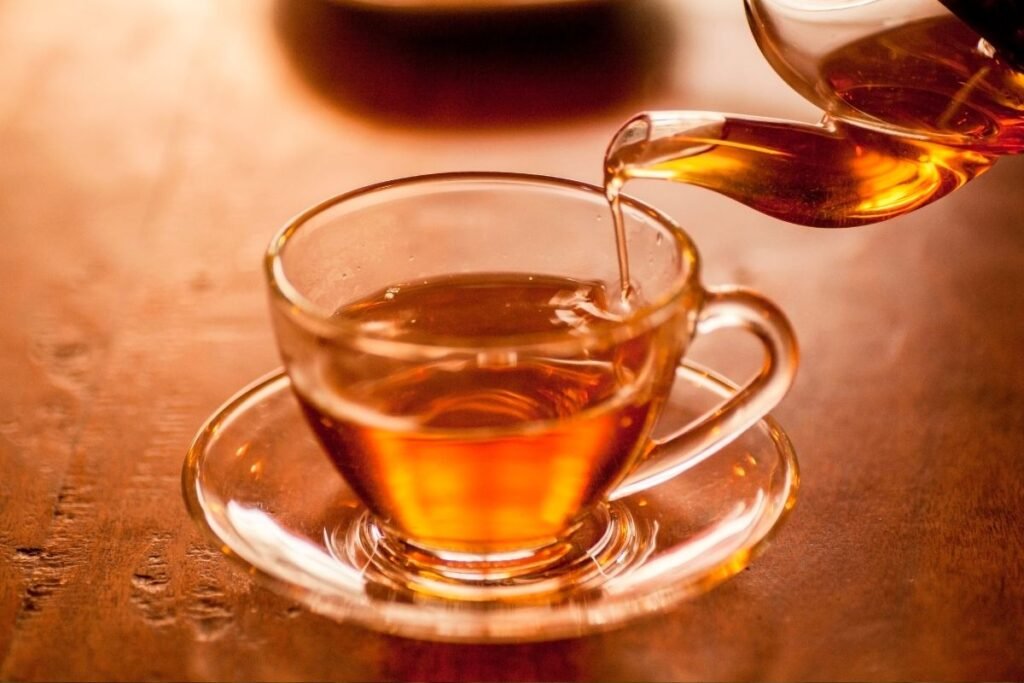
Iced Darjeeling Latte
To make 2 servings of Darjeeling latte, you will need the following ingredients:
- 2 teaspoons of Darjeeling tea leaves,
- 250 ml water,
- 150 ml of cold milk (your favorite),
- ½ teaspoon of cinnamon powder,
- 1 teaspoon ginger powder,
- 4 tablespoons (scraped off) of icing sugar.
Pour water into a saucepan, boil it, and turn it off. Add the cinnamon, ginger, icing sugar, and tea leaves shortly after. Cover the pot and leave it to stand for 4–5 minutes. Then strain the mixture and leave it to cool to room temperature. Add the ice cubes to two glasses and pour over the cooled tea and milk. Stir gently, and add a little more cinnamon before serving.
Iced Darjeeling with Honey and Lemon
Ingredients:
- 4 cups of water,
- 4 teaspoons of Darjeeling tea leaves,
- 2-3 tbsp honey,
- 1 lemon.
Boil the water and turn it off. Add the tea leaves, and steep for about 12 minutes. Add the honey and 1-2 tablespoons of lemon juice while the tea is still warm. Refrigerate the tea for an hour or more. Remove it from the fridge just before drinking.
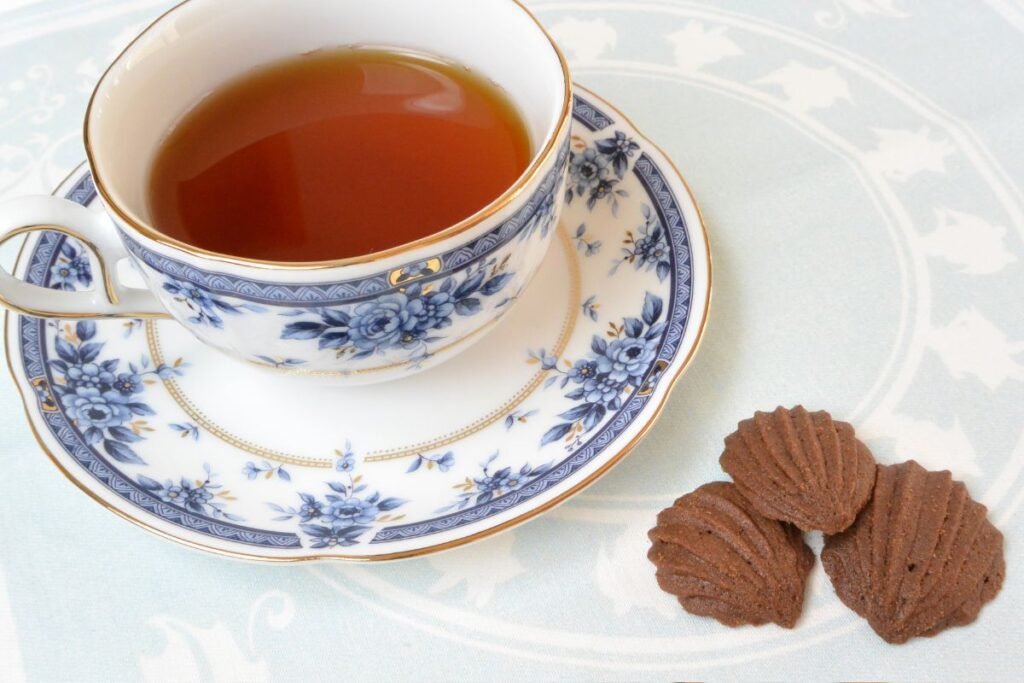
Darjeeling Tea with Chamomile
You can add the benefits of chamomile to Darjeeling tea.
The ingredients for this tea are:
- 1 cup of water,
- 1-2 teaspoons of Darjeeling tea leaves,
- 1 teaspoon of dried chamomile flowers.
Place the chamomile in a cup. Bring the water to 90–95 °C and pour over the chamomile. Leave to stand for 1 minute. Then add the Darjeeling tea leaves, stir, and leave to steep for another 5 minutes. Before drinking, you can strain it.
Darjeeling with Milk and Turmeric
There is another surprising combo of Darjeeling tea. You can supplement it with milk and turmeric.
The ingredients for this tea are:
- ½ cup water,
- 1 teaspoon of Darjeeling tea leaves,
- 1-2 tablespoons of milk,
- 1 teaspoon of turmeric powder,
- 1 teaspoon of honey,
- 4 almonds (soaked, skinned, and chopped).
Bring everything to a boil. Then add the tea leaves and boil for another 30 seconds. Turn off the heat, then strain the tea. Add honey and sprinkle with almonds before drinking.
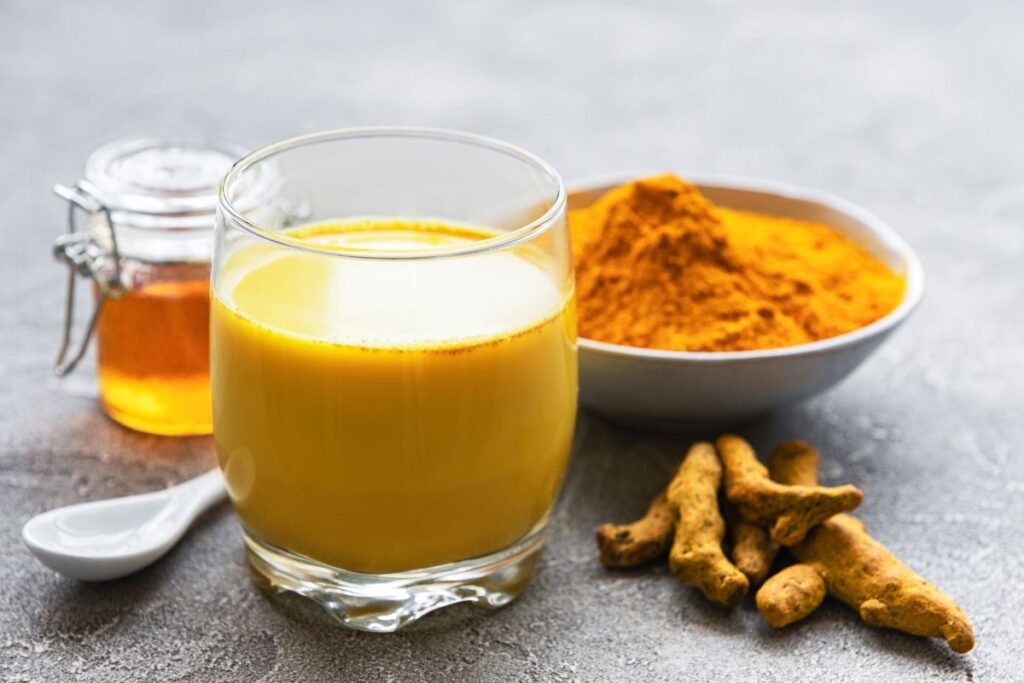
Side Effects of Darjeeling Tea
Excessive intake of Darjeeling tea can be harmful. The most common side effects are:
- Nausea and constipation,
- Decreased iron absorption,
- Darkening of the enamel, the outer layer of the teeth.
Due to its caffeine content, tea is not recommended for pregnant women, breastfeeding women, young children, or people with high blood pressure.
Sources:
https://en.wikipedia.org/wiki/Darjeeling_tea
https://www.thespruceeats.com/tea-flushes-in-darjeeling-765194
https://www.healthline.com/nutrition/darjeeling-tea
https://teafloor.com/blog/darjeeling-tea-5-amazing-recipes-you-must-know/
Associative photos from © Canva.

